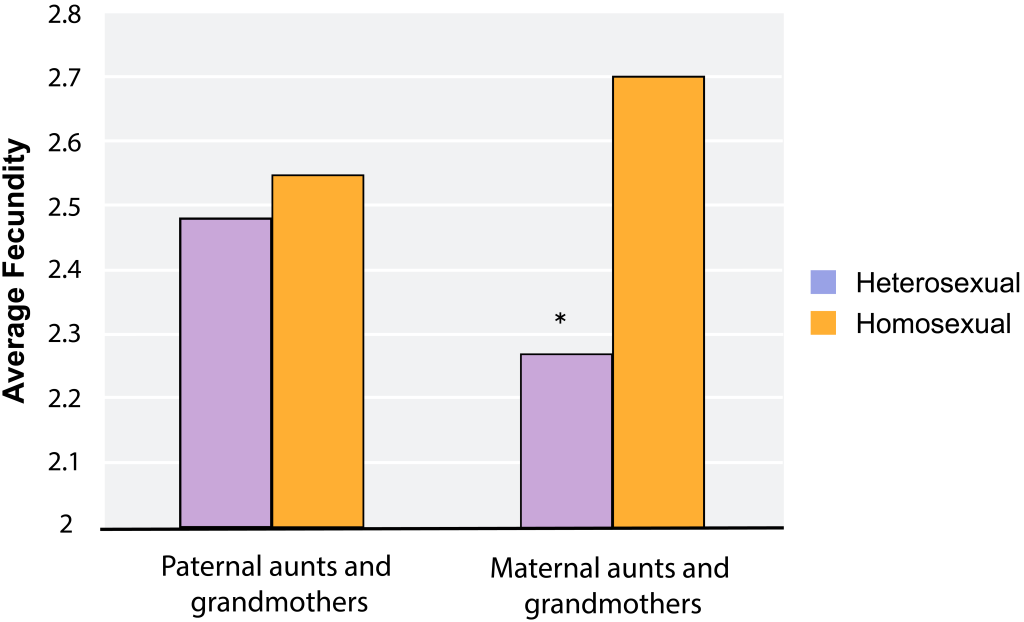12.10 Testing hypotheses about the ultimate causes of homosexuality
Practice

In a study of the impact of male-male courtship in the fruit fly (Drosophila melanogaster), Scott McRobert and Laurie Tompkins note that “we have shown that D. melanogaster males that are courted [by males] when they are young subsequently copulate more quickly with females than do males that never elicited courtship [by other males]. The ability to copulate quickly is advantageous in these animals, and can lead to greater reproductive success. These findings lend support for which of the following hypotheses?
From: McRobert, S.P. and Tompkins, L. Two Consequences of Homosexual Courtship Performed by Drosophila melanogaster and Drosophila affinis Males Evolution 42, 1093–1097 (2017)
Enhance family fertility
A study by Italian biologists Andrea Camperio Ciani and Elena Pellizzari looked at family fertility data from homosexual and heterosexual males in Spain, Italy, and France. Consider the data in the following figure:

So, what’s the answer?
There is no single solution to the “puzzle” of homosexuality. There is mixed support for all of the various hypotheses listed in Section 12.9 about the ultimate causes of homosexuality. The “correct” ultimate explanations may be different in different species and in different sexes and genders. At a proximate level, we already know that sexual orientation in humans is affected by many factors and that those factors themselves are context-dependent. Our understanding of the origins and evolution of sexuality will continue to develop over the coming years.
- https://commons.wikimedia.org/wiki/Drosophila_melanogaster#/media/File:Drosophila_melanogaster_-_side_(aka).jpg ↵

